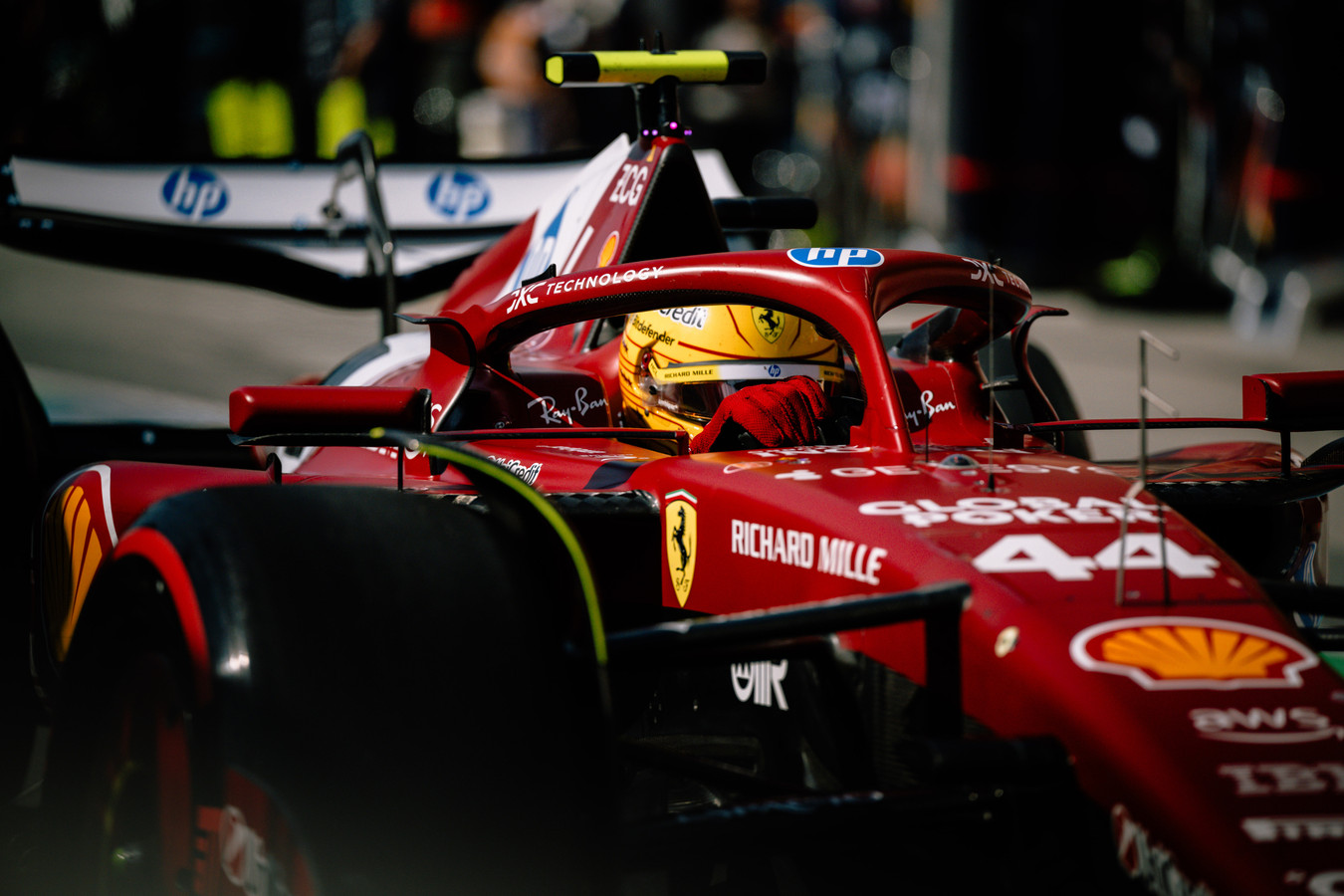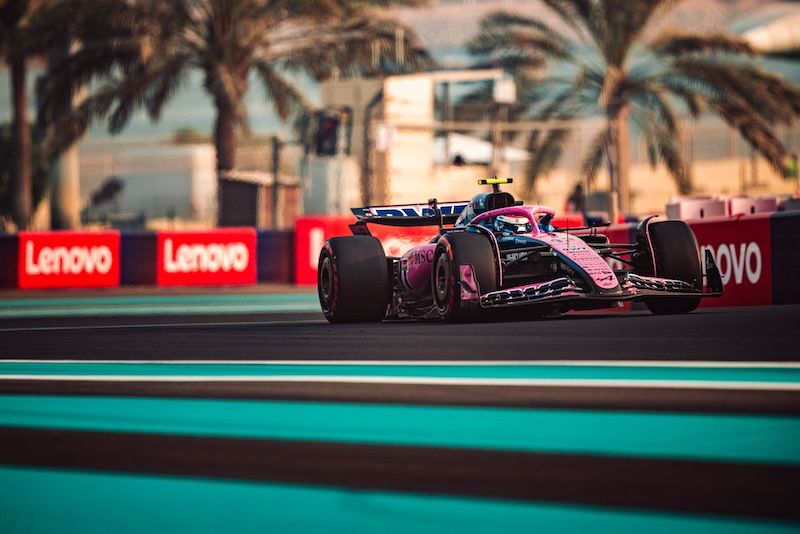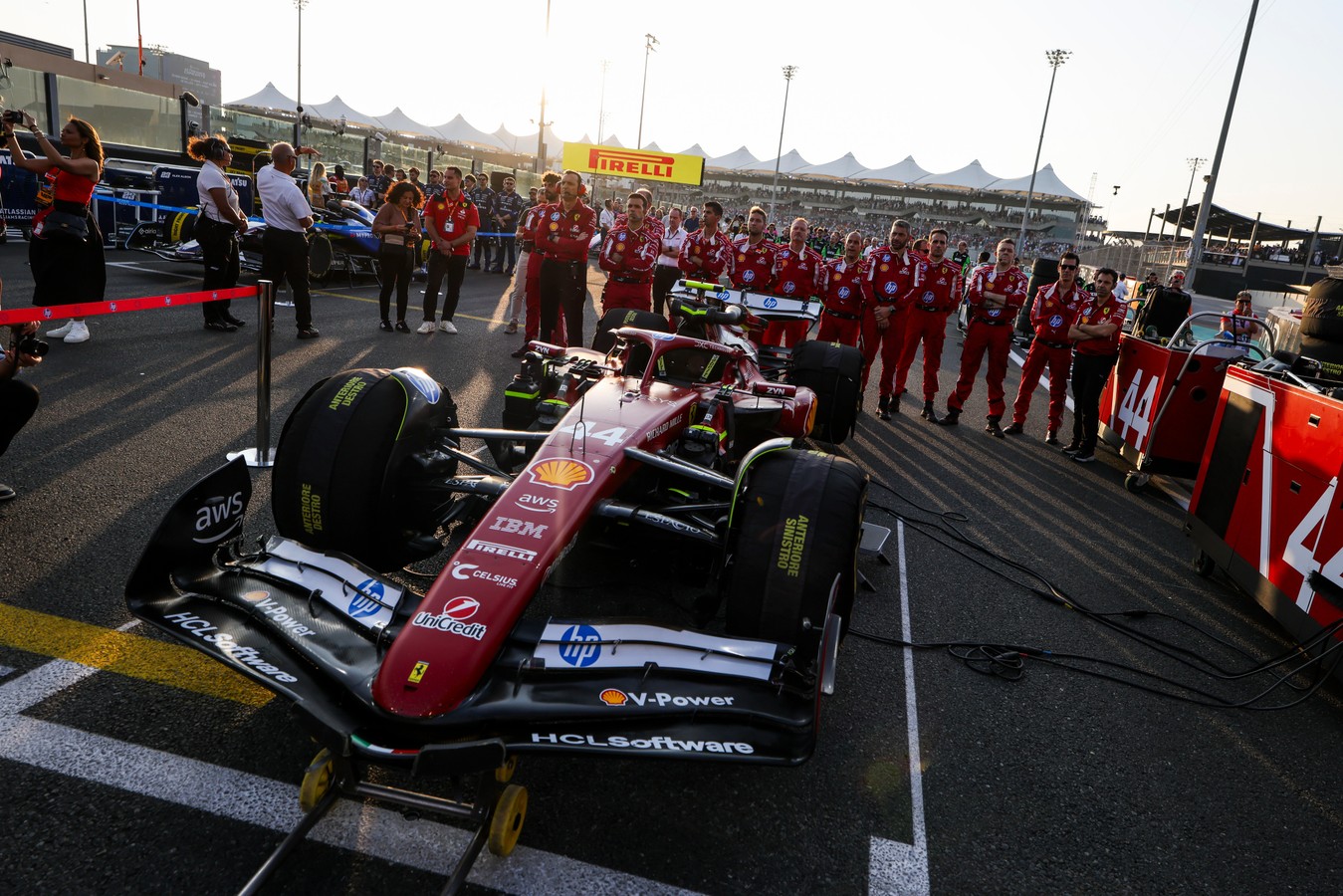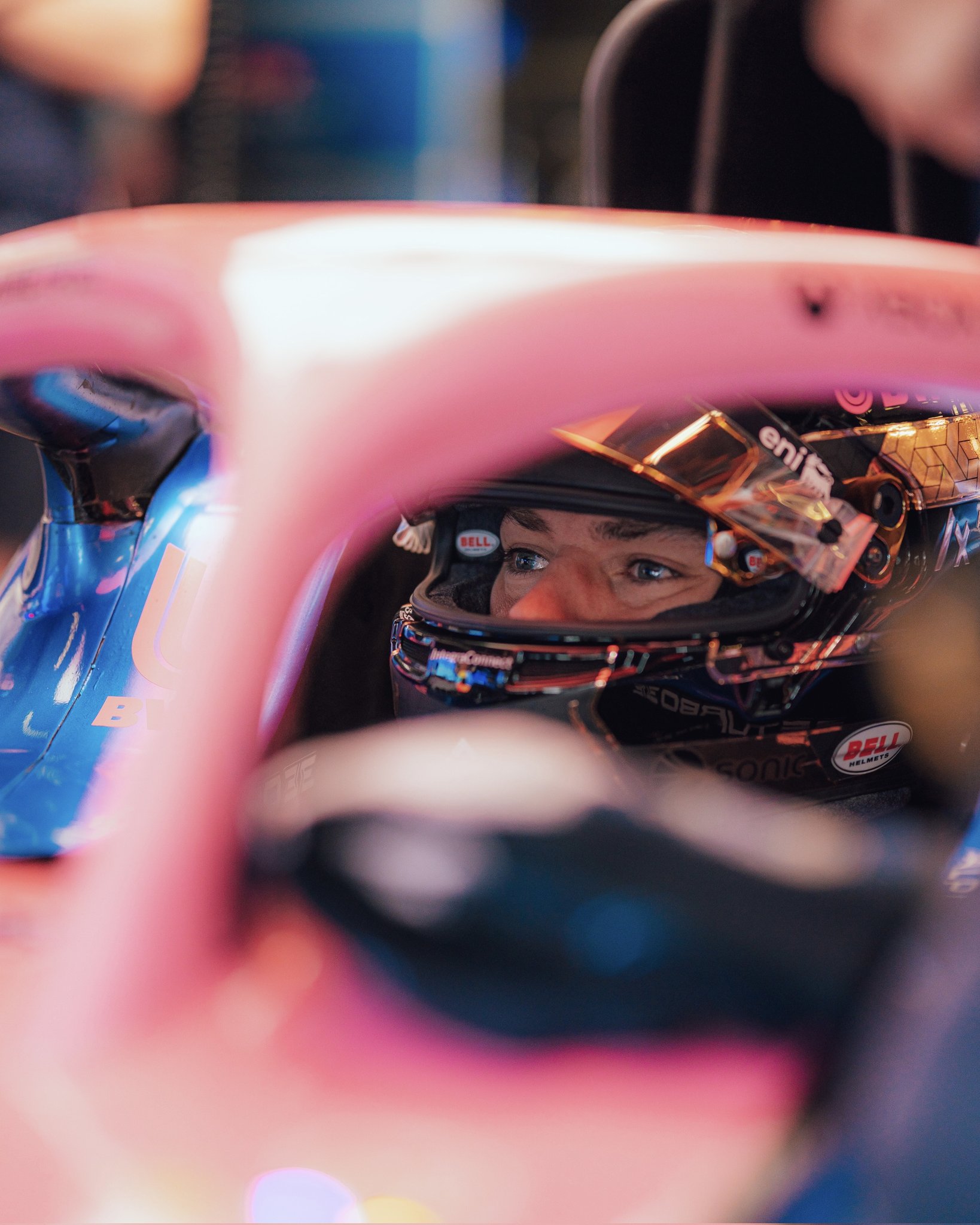Lewis Hamilton delivered one of his strongest qualifying performances of the season at the F1 Canadian GP, securing fifth place on the grid whilst experiencing what he described as the best he’s felt in the car all year—even as Ferrari continues to battle fundamental limitations against their rivals.
The seven-time world champion’s candid assessment of his team’s progress and challenges provided insight into both the incremental gains Ferrari have made and the significant work still required to challenge for victories.
Breaking the Qualifying curse
Hamilton’s progression to Q3 marked a significant milestone for Ferrari, breaking a frustrating pattern that had plagued the team throughout the early part of the season. Hamilton was notably pleased with simply reaching the final qualifying segment of the F1 Canadian GP.
“Well we’ve progressed coming into it today, so that is a plus,” Hamilton reflected after securing his fifth-place starting position in the print media pen. “More often than not we go through P1 and then P2. P2’s often, like the previous races, P2’s not been so great because there’s been something wrong with the car. Like the floor’s not working, or the rear wing’s stopped working, or the rear-wing’s not working. There’s always been something that meant that we were down on downforce or something.
“We were struggling before on four sets of softs to get through to Q3. I was really happy with that.”
Fundamental progress through adaptation
Despite the car remaining essentially unchanged in specification, Hamilton revealed that much of the weekend’s progress came from his own adaptation rather than mechanical improvements.
“I think probably today, most progress came from my driving. So adapting driving style. So just made a few changes in how I drove,” he explained. “This car drives so much different to what I had before. You go into low-speed corners and you’re waiting and waiting. It just doesn’t want to turn.”
The admission highlighted the ongoing challenge Hamilton faces in extracting performance from Ferrari’s current package, requiring constant adjustment to his natural driving instincts developed over years of championship-winning machinery.
When asked directly about his feelings in the car, Hamilton was unequivocal. “Yeah,” he confirmed when asked if this was the best he’d felt all year. “Definitely the best I’ve felt. But this is a track where you need confidence to attack the kerbs. You need confidence to go towards the wall.”
The reality of Ferraris’ position
Hamilton remained refreshingly honest about Ferrari’s current competitive position, acknowledging the significant gap to the front-runners whilst maintaining optimism for race day opportunities.
“Fundamental baseline of our car is… It’s not as good as the guys up ahead today, quite far off,” he admitted. “But we have new mediums, of course, that the guys ahead have used. So hopefully, there’s something today. I’m still hopeful for race day, maybe. If we can get the balance set right at the moment, hopefully. I’d love to see it. The podium is still one goal.”
The element of tyre allocation provided some cause for optimism, with Hamilton noting the advantage of having fresh medium compounds available for the race.
When questioned about the possibility of using medium tyres in Q3, Hamilton’s response was immediate and definitive. “Not even on the radar,” he said.
“Both tyres felt pretty much the same. I feel like we were able to get a lot out of it. Getting that single lap out of the medium, it’s all possible. This morning, we thought they were very close. So the team chose to go with softs.”
The incremental approach
Hamilton’s description of Ferrari’s development approach revealed a methodical, step-by-step process rather than revolutionary changes.
“Just incremental steps. We’ve not had any upgrades or anything like that. It’s the same car for quite some time now,” he explained. “With the same package, I’m just challenging the guys. I’m constantly battling the engineers, asking questions of them. They set things up and this is how we always do it. I’m like, well, what about this? We work on trying things. Bit by bit, we are making progress.
“We’ve improved in our qualifying complex from Monaco onwards, which is positive.”
Despite the incremental progress, Hamilton was clear about what Ferrari ultimately needs to compete at the highest level.
“Ultimately, we need upgrades. We need an upgrade to be able to fight the guys up front,” he stated matter-of-factly.
“It’s my first half of the year in a new team. It’s interesting to see how different teams work and operate. There’s been times in my career where you’ve had a whole bunch of upgrades very early on in a season. You plough ahead very early, then you stop and taper off. Sometimes it’s been slower.”
Long-term vision
Hamilton’s comments revealed a mature understanding of the bigger picture, acknowledging the balance between immediate competitiveness and future success.
“It’s also in the last year of this generation of cars, it’s harder to find performance. Also, you’ve got to be focused on next year,” he noted. “The fact is, with this car, hopefully we can still fight for second in the constructors. That would be great. But I want a car that can win next year, so that’s a priority. That’s what we’re aiming for.”
Despite the challenges, Hamilton’s fundamental approach remained unchanged, driven by the mentality that has defined his career.
“I’m always hoping to be further up. I came in to win,” he declared when questioned about his expectations.
“I’m grateful to be where I am. I’m not far away from the guys ahead. I’m really hoping that I can hold on to them and see if I can stay in the fight.”





